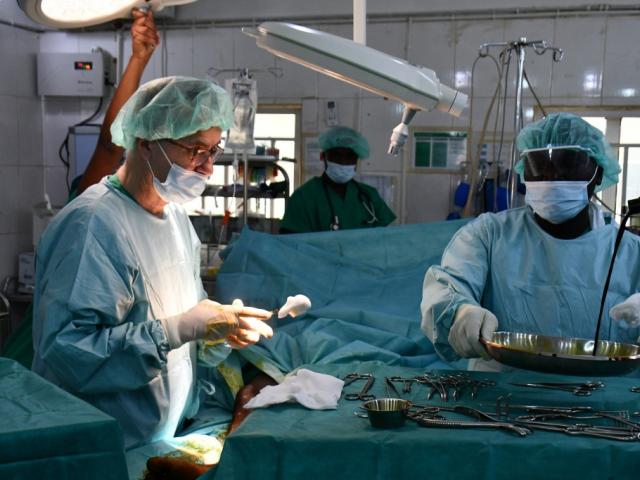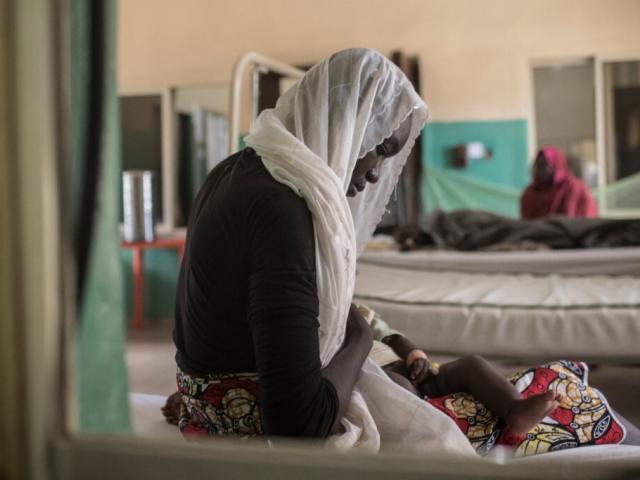-
The Punch article is mostly correct to say a Nigerian woman has a one-in-22 lifetime risk of dying during pregnancy, childbirth, after birth or after an abortion.
-
But its claim that Nigeria’s maternal mortality rate is 512 deaths for every 100,000 live births is unproven. And its figure for maternal mortality in developed countries is incorrect.
-
The article is also incorrect to claim that fewer than 60% of pregnant Nigerian women attend antenatal clinics.
A recent article in the national Nigerian newspaper Punch has a startling headline: “Rubbing cow dung on vagina during labour won’t aid delivery, can cause infection –Gynaecologist”.
The August 2022 article interviews Dr Labaran Aliyu, a consultant obstetrician and gynaecologist at the Aminu Kano Teaching Hospital in the northern Nigerian state of Kano.
Aliyu discusses cultural practices that pose major risks to the health of pregnant women.
The article makes some interesting claims. We looked at four.
We have asked Aliyu for the evidence for the claims and will update this report with his response.
The World Health Organization uses the availability of antenatal care as an indicator of access to healthcare during pregnancy. It says the antenatal period – conception to birth – is vital to the health of pregnant women and their infants.
The most recent data on antenatal care in Nigeria is from the 2021 multiple indicator cluster survey (Mics) and national immunisation coverage survey (Nics).
It found that 70% of women aged 15 to 49 who had given birth in the five years before the survey received antenatal care from a skilled provider at least once in their most recent pregnancy.
The survey, by the National Bureau of Statistics (NBS) and United Nations Children’s Fund (Unicef), was carried out across Nigeria from September to December 2021. A total of 38,806 women were interviewed.
Older survey yields similar numbers
The 2018 Nigeria demographic and health survey (DHS), done every five years, also has national data on antenatal care. It found that 67% of women aged 15 to 49 had received antenatal care from a skilled provider at least once during their most recent pregnancy.
It also found that 57% had at least four antenatal care visits.
The DHS interviewed 41,821 women from August to December 2018.
The available data does not support the claim that “less than 60%” of Nigerian women attend antenatal clinics.
The article attributes this stat to the 2018 demographic and health survey.
This interviewed 106,590 women, aged 15 to 49 and who had sisters, across the country. They were asked if any of their sisters aged 12 and above had died, and if the death had been pregnancy-related.
The study estimated maternal mortality at 512 deaths for every 100,000 live births in the seven years before the survey.
This means that for every 1,000 live births in Nigeria in that period, about five women died either during pregnancy, childbirth or within two months after giving birth.
But this indicator is not captured in the 2021 Mics survey, the most recent.
A former director at the statistics bureau previously told Africa Check that they stopped recording maternal mortality due to persistent issues with sampling.
Understanding the different terms for maternal death
The World Health Organization defines maternal death as any death of a woman during pregnancy, childbirth or up to 42 days after birth, but excludes accidents.
A late maternal death is “the death of a woman from direct or indirect obstetric causes, more than 42 days but less than one year after termination of pregnancy”. Late maternal death also includes both direct and indirect maternal and obstetric deaths.
Direct maternal death is caused by obstetric complications and from interventions, omissions and incorrect treatment. Other causes include haemorrhage or hypertensive disorders, complications of anaesthesia and caesarean section.
Indirect maternal death results from “previous existing disease or disease that developed during pregnancy and not due to direct obstetric causes but were aggravated by the physiologic effects of pregnancy”.
We found the source as a 2019 World Health Organization article titled “Maternal health in Nigeria: generating information for action”.
“A Nigerian woman has a 1 in 22 lifetime risk of dying during pregnancy, childbirth or postpartum/post-abortion,” it says.
But this data was dated, Ann-Beth Moller, a technical officer with the WHO’s sexual and reproductive health and research department, told Africa Check.
“Please note the website reported old data,” she said. The article estimates Nigeria’s maternal mortality rate as more than 800 maternal deaths for every 100,000 live births.
The most recent data was the trends in maternal mortality 2000 to 2017 report, Moller said.
The report’s estimates are by the WHO, Unicef, the World Bank and other agencies. They put the lifetime risk of maternal death in Nigeria at one in 21, close to the older WHO estimate and the claim in Punch.
For a more recent estimate, we checked the 2018 Nigeria demographic and health survey (NDHS). This indicates that one in 34 women in Nigeria is likely to die from causes related to pregnancy and childbirth.
Why is this estimate lower than the WHO’s? A statistician at Nigeria’s data agency told Africa Check the NDHS estimate was based on the seven-year period preceding the survey and included more indicators.
The trends report’s estimates, on the other hand, were for 2017 only.
There could be many reasons why Nigeria still has a high number of maternal deaths. Moller said women still had relatively low access to antenatal care, delivery by a skilled birth attendant, birth at a health facility, and care after birth.
To check this claim, the WHO’s Moller again referred us to the maternal mortality: levels and trends 2000 to 2017 estimates.
“We do not have an estimate for developed countries but for high income ones it is one in 5,400,” she said.
The World Bank classifies economies with a gross national income of US$13,205 or more per person as “high income”.
Nigeria is classified as a lower middle income economy, with a GNI per person of $1,086 to $4,255.








Add new comment